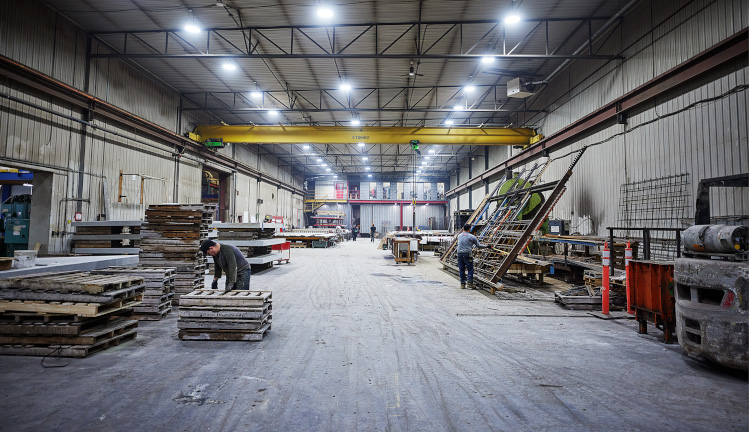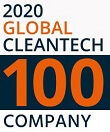
As demand for steel is projected to rise 30 percent by 2050 due to the expansion of infrastructure and cities across the world, the carbon impacts generated by the industry are becoming more severe. Green steel is the concept of producing steel without fossil fuels or GHG emissions, under the principles of decarbonization and circularity of resources. Doing so will require research, development, and investment to maintain the market on the road to climate neutrality. Green steel implementation involves entirely shifting modes of production through the support of innovation. CarbiCrete is part of that cycle of innovation for steel manufacturing, utilizing its waste in production and championing a greener, more sustainable industry.
As the most commonly used metal in the world today, it’s no surprise that steel is responsible for 8 percent of global emissions. An average of 1.8 tons of CO2 is emitted into the atmosphere for every ton of steel that’s produced. The main cause of these emissions are the coal-fired blast furnaces (BOF-BF) used in the process that need to be heated to above 1000C—requiring significant energy and pumping out large amounts of CO2. According to the International Energy Agency (IEA), meeting global climate goals will require a 50% emission reduction from the steel industry by 2050.
Achieving this goal through green steel involves a variety of solutions, spearheaded by the replacement of those coal-fired blast furnaces. While 75 percent of global steel is still produced using coal, the industry is moving towards its substitution for electric arc furnaces (EAFs) instead. The EAF process is powered by electricity and uses steel scrap as the main raw material, promoting circularity in manufacturing and eliminating the carbon emissions from coal-based energy. In the US, EAF steel went from accounting for 38% of output in 1996 to 71% in 2022—modelling the adoptability and spread of this solution today. Another pathway to green steel is the introduction of the direct reduction iron (DRI) process, which uses iron pellets from ore in an electric arc furnace, expectantly powered by green hydrogen, to produce green steel.
The adoption of DRI technology is gradually gaining momentum, along with the introduction of carbon capture storage and utilization (CCUS) in steel. Capturing carbon emissions from steel production and either storing it underground or utilizing it remains in the pilot stage for now. While significant investment will be needed to bring CCUS in steel to a large-scale, the interest in being able to capture emissions and operate a plant “as normal” is growing, as seen through the pilots being discussed in the US, France and Belgium. The possibilities don’t stop there—just recently a company in Israel discovered they could use sodium instead of coal to produce net zero steel, a technology they tested and want to employ, demonstrating more optimism for the industry’s success at its transition to green steel.
In Canada, two major steel producers, Algoma and Arcelor Mittal Dofasco are investing in green steel, with some help from the federal government. Algoma traded its blast furnace for an electric arc furnace, to reduce its carbon emissions by around 70 percent. Arcelor Mittal Dofasco invested in both EAF and DRI installations to reduce its emissions 60 percent by 2028. Green steel announcements have become a global trend; modelled through Arcelor Mittal’s similar project in France, US Steel’s discussion for CCS research in the US, and Germany’s 2-billion-euro project for a Thyssenkrupp green steel plant. According to McKinsey & Company, a global capital spend of $4.4 trillion USD over the next 30 years would be required to successfully shift to low-emission steel production with an estimated “three-quarters of investment…on new hydrogen-powered DRI-EAF plants, and the rest to equip existing BF-BOF plants with CCS.”
Adapting steel to the future of a sustainable economy won’t be a simple economic transition. Global support and innovation from companies like CarbiCrete can help make it possible. Cement is concrete’s binder, making up 10-15% of the concrete mix. But cement is responsible for nearly 90% of concrete’s emissions—8% of annual emissions worldwide. CarbiCrete’s process uses steel slag, an industrial by-product of steelmaking, in place of cement in the concrete mix. This solves emissions issues for both the steel and cement industries.
CarbiCrete concrete blocks reduce emissions by valorizing waste streams from heavy industrial processes like steelmaking. This actively engages in circularity by diverting and utilizing waste destined for landfill. As EAF steel scales upward, slag availability is expanding in line with CarbiCrete’s potential to contribute to the circular economy. This sustainable alternative to cement-based concrete demonstrates the innovation potential for major manufacturing sectors, while progress in green steel lends itself to the vision of a carbon neutral future for construction and manufacturing.



